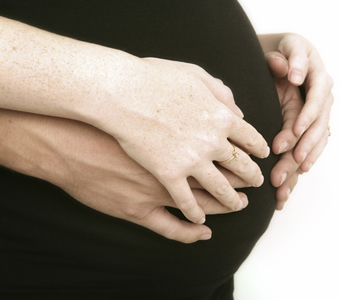 On May 6, 2010, the Pew Research Center released a study on changes in the demographics of motherhood in the United States. Comparing data from the National Center for Health Statistics (NCHS) and the Census Bureau from 1990 and 2008, the “The New Demography of American Motherhood” noted several dramatic shifts in who is becoming a mother in the past two decades. The report also incorporated the results of a nationally representative survey of Americans about attitudes on several trends regarding birth patterns conducted by the Pew Center in April 2009.
On May 6, 2010, the Pew Research Center released a study on changes in the demographics of motherhood in the United States. Comparing data from the National Center for Health Statistics (NCHS) and the Census Bureau from 1990 and 2008, the “The New Demography of American Motherhood” noted several dramatic shifts in who is becoming a mother in the past two decades. The report also incorporated the results of a nationally representative survey of Americans about attitudes on several trends regarding birth patterns conducted by the Pew Center in April 2009.
Among the most notable were the changes in the age of the women having babies. In 2008, there were more births to women over 35 (14%) then to teenagers (10%). Indeed, the rate of births to women across race and ethnic groups over age 35 grew 64% between 1990 and 2008, with the birth rate of women over 40 tripling since 1990 (though still only 3% of all births; 43% of all births are still among women under age 35). The authors of the study note that the increase in older women having babies is part of the larger demographic trend in the United States; there are fewer women in their prime child-bearing years now and the youngest baby-boomers are in their mid-40s. In their survey, the Pew Research Center found that a plurality of Americans (47%) do not think it makes much difference if a woman becomes a mother over the age of 40. However, 33% disapproved of women over 40 having babies.
As part of this trend of older mothers, the study also cited an increase in the use of fertility treatments, especially for women over 30. Moreover, a third of all adults told the Pew survey that they know of a woman who has undergone fertility treatment. For college graduates, that number was 54%, and for those with a household income of $100,000 or more, 56% knew a woman who had undergone fertility treatments. A plurality of Americans (39%) told the Pew Center that it did not make a difference if women used fertility treatments in order to get pregnant; 28% said it was a good thing, 23% said it was bad for society, and 10% said they did not know or did not give an answer. However, younger respondents were more likely to say the trend was not a social problem. Of those 18-49, 46% believed it was not a concern, compared to 31% of adults who were 50 or older. Additionally, those with a college degree saw the trend as not being a social concern compared to those with at most a high school diploma (48% compared to 35%).
Another significant demographic change is the increase in the Hispanic population in the United States, a population with the highest birth rates in the country. Using 2004 data, the study found that nearly 1 in 4 babies born had a Hispanic mother (24%), up from 1 in 7 in 1990 (14%).
Finally, in analyzing the NCHS data, the Pew study found an increase in unmarried women having children: in 2008, women who were not married accounted for 41% of births, up from 28% in 1990. Again, the study tied this change to the larger demographic change of people marrying later in life and/or not marrying at all. The Pew Center survey found, however, that Americans’ attitudes are not consistent with this trend: most Americans (65%) indicated that the rise in unmarried mothers was bad for society.
An executive summary with a link to a pdf of the full report can be found on the Pew Research Center web site: http://pewresearch.org/pubs/1586/changing-demographic-characteristics-american-mothers

